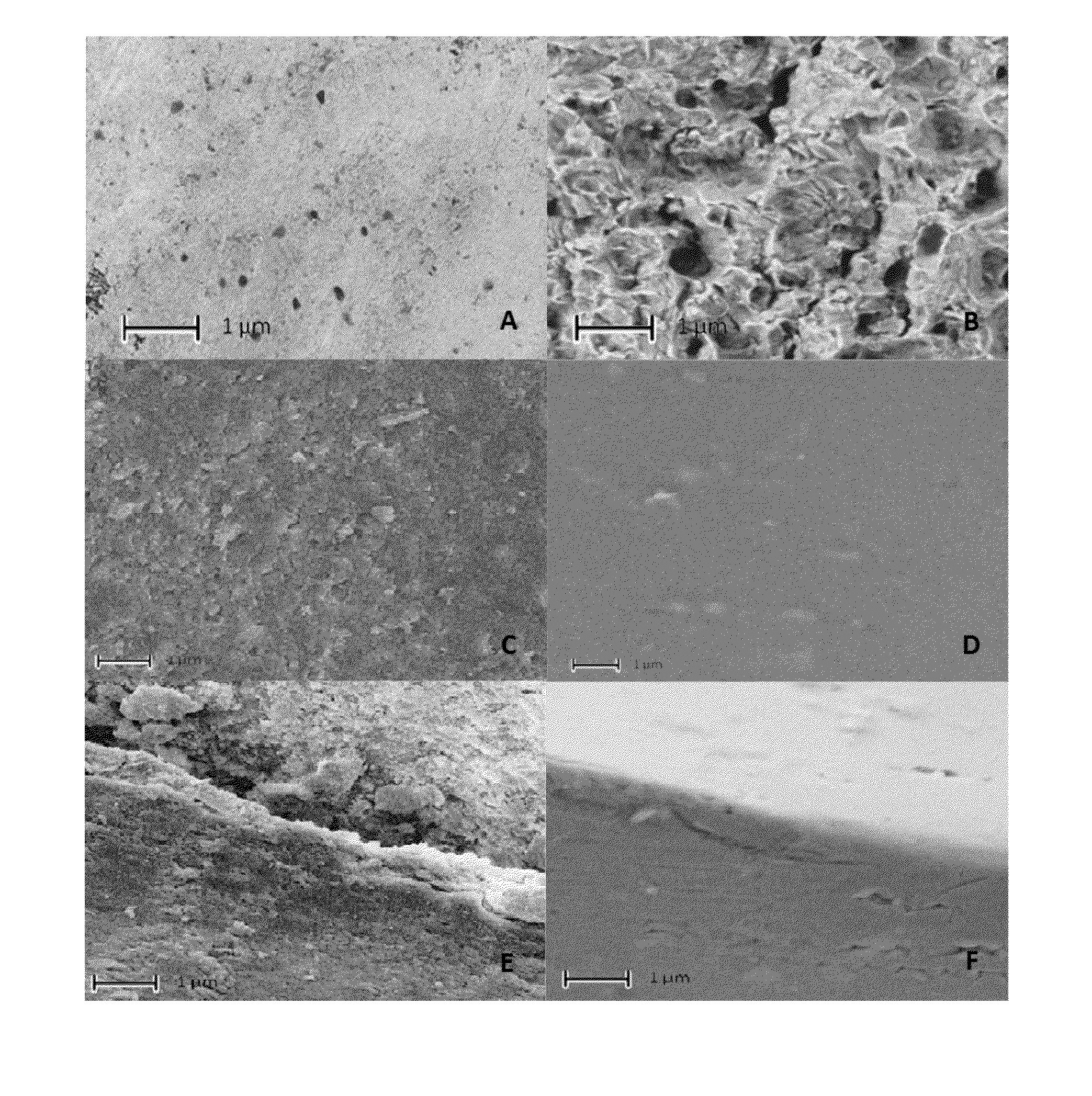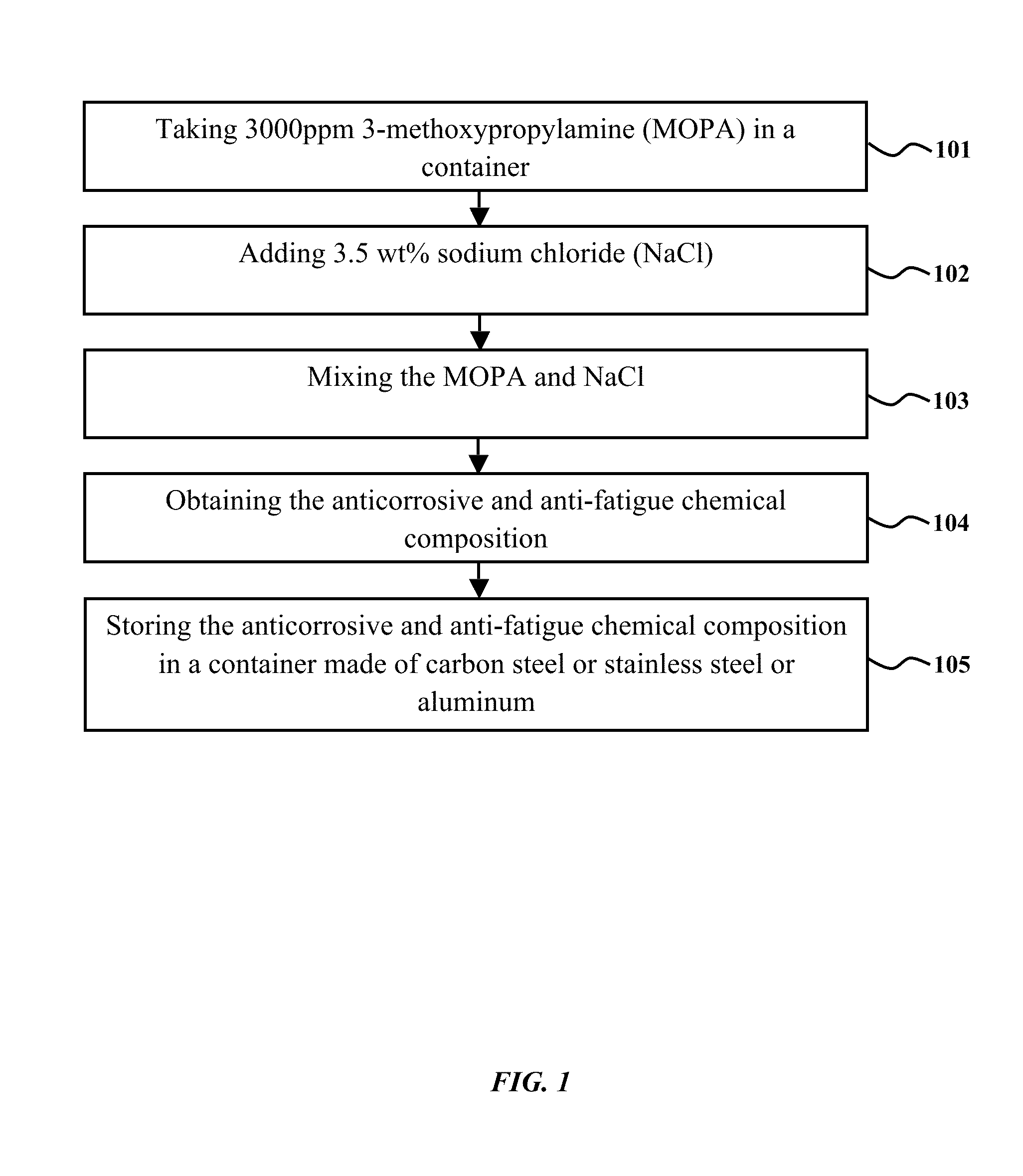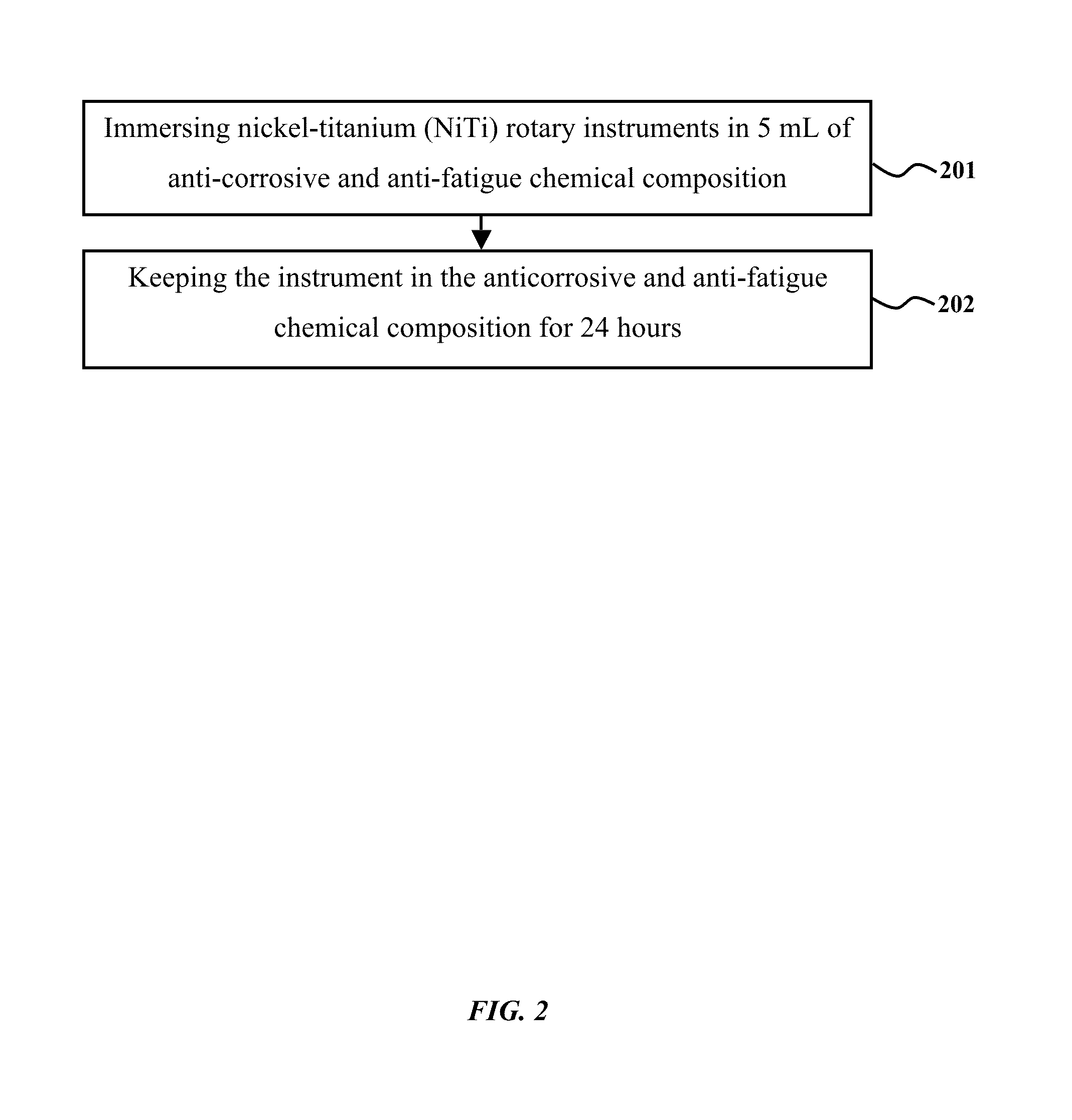Anticorrosive and Anti-fatigue chemical composition for nickel-titanium dental instruments and a method of synthesizing the same
a technology of anticorrosion and anti-fatigue, which is applied in the field of dental appliances or instruments, can solve the problems of unreduced occurrence of unwanted procedural accidents, perforation and instrument separation, and increase the number of cycles of failures, and increase the cyclic fatigue resistance of nickel-titanium (niti) rotary files
- Summary
- Abstract
- Description
- Claims
- Application Information
AI Technical Summary
Benefits of technology
Problems solved by technology
Method used
Image
Examples
example 1
Sample Treatment and Cyclic Fatigue Testing with Anticorrosive Chemical Composition
[0091]Forty Pro Taper F1 rotary files were selected and divided into four groups (n=10). All Pro Taper F1 rotary files were rotated at 300 rpm for 30 seconds using a 1:16 reduction handpiece with a torque-controlled electric motor at 300 rpm. The applied torque was 70 Nm for ProTaper, according to manufacturer's instructions. The time to fracture was recorded by a chronometer accurate to 1:100 of a second and the number of rotations to breakage was calculated (NCF=time×speed). Before and after sterilization and also after file separation. The files were observed and examined under a scanning electron microscope (SEM) operating at 15 kV.
[0092]The Pro Taper F1 rotary files were firstly rotated at 300 rpm for 30 seconds in presence of phosphate buffer saline (PBS) inside artificial canal which was made of stainless steel block lathed by a CNC device to a 110 mm×100 mm×10 mm dimension. The rotary files ...
example 2
Sample Treatment and Cyclic Fatigue Testing and Comparison with Different Solutions
[0095]Pro Taper F1 files were first rotated at 300 rpm for 30seconds in the presence of PBS and then underwent seven cycles of sterilization at 121° C., 15 psi for 15 minutes. Thereafter, samples were immersed in one of the following solutions (5 mL) for 24 hours in a 10 mL glass vials for 30 minutes. Group 1: Deionized water (DW); Group 2: blood; Group 3: PBS; and Group 4:3.5 wt % NaCl+3000 ppm methoxypropylamine (MOPA) solution (pH=11.1). Blood was collected by a vein puncture needle 25×7 in a 5 mL tube with the 5% percentage by weight anticoagulant EDTA.
[0096]Before receiving rotations, the instruments were introduced into the canals to the full working length by moving the blocks toward the fixed hand piece. All instruments were rotated at 300 rpm using a 1:16 reduction handpiece with a torque-controlled electric motor. The applied torque was 70 Nm for ProTaper, according to manufacturer's instruc...
example 3
Scanning Electron Microscope (SEM) Analysis
[0097]Samples before and after sterilization and also after file separation were observed by examining under a scanning electron microscope (SEM) operating at 15 kV. Data were analyzed by Kolmogorov-Smirnov test, Levene test, ANOVA test and Scheffe test.
[0098]FIG. 4 illustrates the graph indicating number of cycles to failure (NCF) of nickel titanium (NiTi) files / dental instruments treated by anticorrosive dental chemical composition and with other solutions, according to one embodiment herein. The graph illustrates the number of cycles to failure (NCF) of nickel titanium (NiTi) rotary files treated by anticorrosive dental chemical composition (group 4) which is compared with other solutions such as deionized water (group 1), blood (group 2) and PBS (group 3). The image revealed the lowest NCF for group 2 (blood) and the highest NCF for group 4(Anticorrosive dental composition).
[0099]FIG. 4 illustrates the results of number of cyclic fatigu...
PUM
| Property | Measurement | Unit |
|---|---|---|
| Fraction | aaaaa | aaaaa |
| Time | aaaaa | aaaaa |
| Volume | aaaaa | aaaaa |
Abstract
Description
Claims
Application Information
 Login to View More
Login to View More - R&D
- Intellectual Property
- Life Sciences
- Materials
- Tech Scout
- Unparalleled Data Quality
- Higher Quality Content
- 60% Fewer Hallucinations
Browse by: Latest US Patents, China's latest patents, Technical Efficacy Thesaurus, Application Domain, Technology Topic, Popular Technical Reports.
© 2025 PatSnap. All rights reserved.Legal|Privacy policy|Modern Slavery Act Transparency Statement|Sitemap|About US| Contact US: help@patsnap.com



